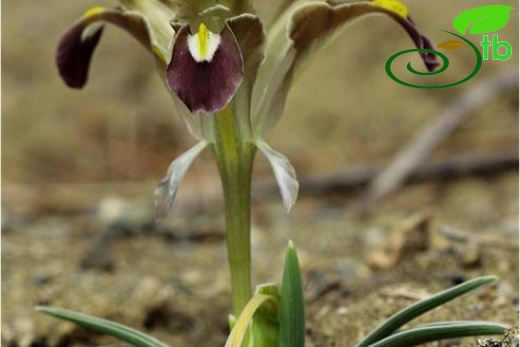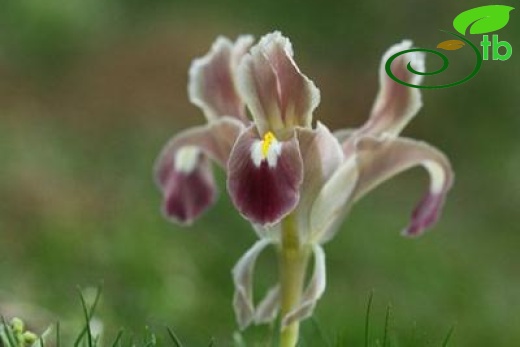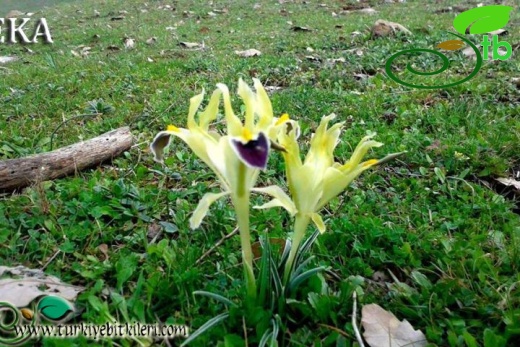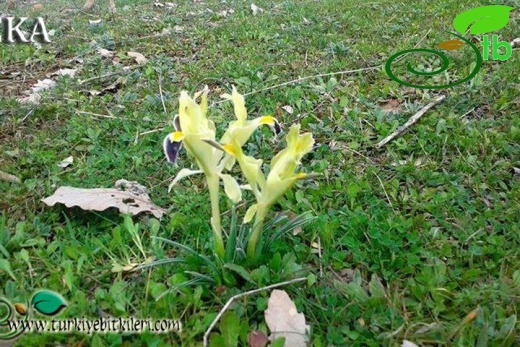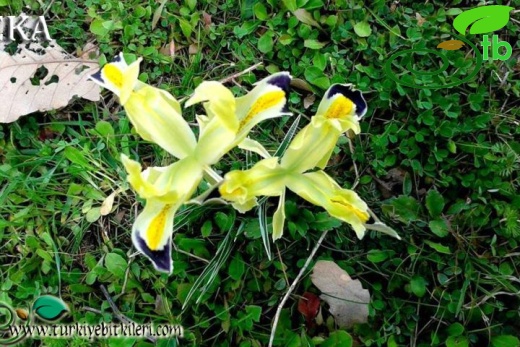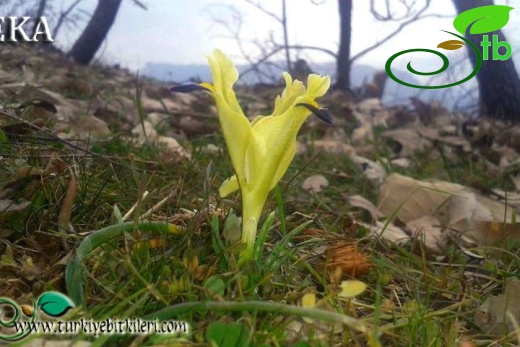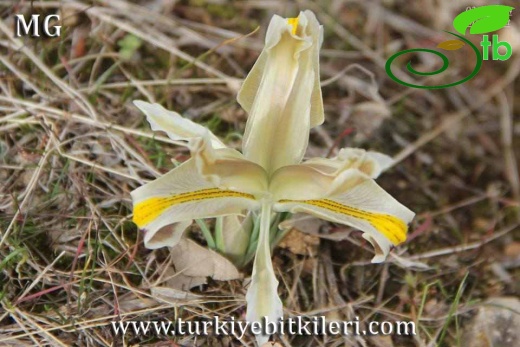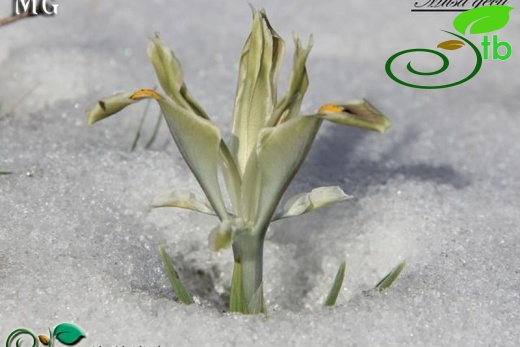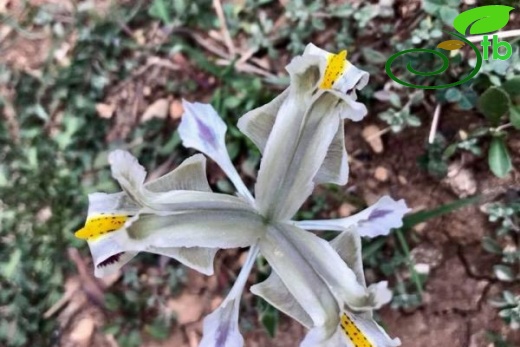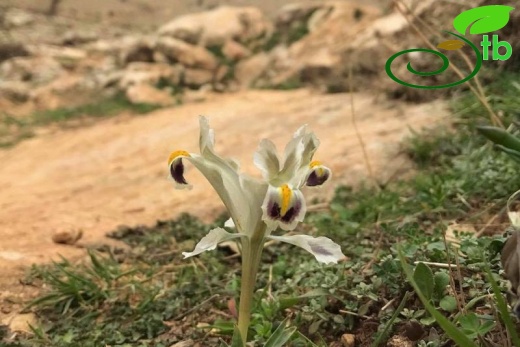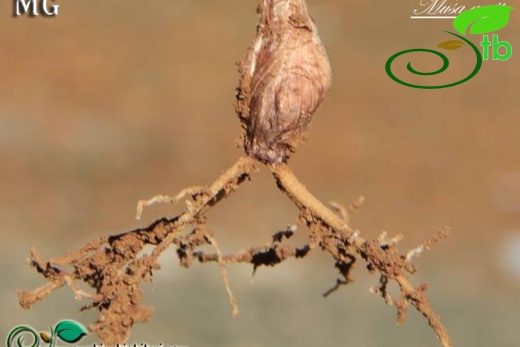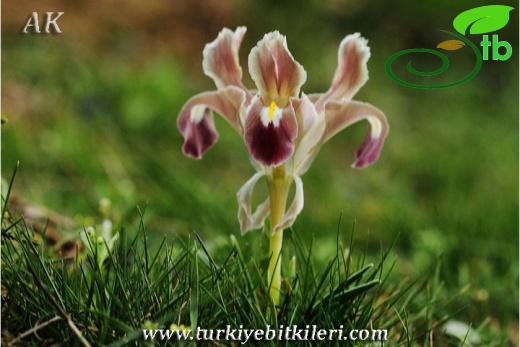Iris persica
Iris persica
Subsp. persica: Navruz; Subsp. sieheana: Buzala
Plant 9-11 cm. Bulb c. 1.5 cm diam., old tunics forming an elongated neck. Leaves 3-4, partially to well developed at anthesis, expanding later to 10 cm, 0.4-1.2 cm broad at base, falcate, glossy green above, greyish-green below; margin thickened, translucent or white, papillose or scabrid. Stem nearly absent, concealed by leaf bases, not elongating in fruit. Bract and bracteole unequal and/or dissimilar in texture, bract green, rigidly erect and leaf-like, bracteole membranous, often semi-transparent. Flowers 1-4, silvery-grey, dull straw yellow, brown or pale greyish-green, often suffused dull purple, falls usually with a darker purple or brownish lamina; perianth tube 6-8 cm; falls 3.5-4.5 cm, claw winged, 2-3 x 2-2.5 cm, lamina broadly elliptic, 1-1.8 x 0.9-1.4 cm, crest very prominent, yellow, usually spotted brown or purple; standards patent to deflexed, oblanceolate, 1.5-2.5 x 0.3-0.6 cm, entire, 3-lobed or dentate; style branches 3.5-4.5 cm. Capsule ellipsoid, 3-5 x 1-1.3 cm, acuminate; seeds subglobose, C. 4mm, reticulate-wrinkled. Fl. 2-4. Open stony ground, in scrub or sparse Pinus woods, 500-1650 m.
N. Syria, N.E. Iraq. Ir.-Tur. element.


